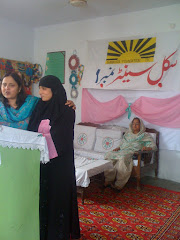






















TAKHT-I-BAHI

Takht Bahi (or Takhtbai or Takht-I-Bahi) is a Buddhist monastic complex dating to the 1st century BCE. The complex is regarded by archaeologists as being particularly representative of the architecture of Buddhist monastic centers from its era. It was listed as a UNESCO World Heritage Site in 1980.
Takht means "throne" and bahi, "water" or "spring" in Urdu. The monastic complex was called Takht-I-Bahi because it was built at the top a hill watered by a spring.
It is located about 15 kilometers from Mardan in
Structure
There are four main areas of the Takht Bahi complex:
§ The "
§ The monastic chambers, consisting of individual cells arranged around a courtyard, assembly halls, and a dining area.
§ A temple complex, consisting of stupas and similar to the
§ The Tantric monastic complex, which consists of small, dark cells with low openings, which may have been used for certain forms of Tantric meditation.
Additional structures on the site may have served as residences or meeting halls, or filled secular purposes. All of the buildings on the site are constructed from local stone, and are mortared with lime and mud.
History
The monastic complex likely was founded in the early 1st Century BCE. Despite numerous invasions into the area, Takht Bhai's hilltop location seems to have protected it from destruction, unlike many comparable early Buddhist monastic complexes. The complex was occupied continuously until the modern era, when charitable funding for the site ended.
Archaeologists have divided the history of the complex at Takht Bhai into four periods, beginning in the 1st Century BCE. This first era continued until the 2nd Century CE, and is associated with the Kushan king Kanishka, as well as early Parthian and later Kushana king. The second construction period, which included the creation of the
The first modern historical reference to these ruins was made in 1836 by the French Officer, the Buddhist remains are in a village name "MAZDOOR ABAD".at south another village is located name Juma Gul kallay and this is the most beutiful village of thiz area. Every one who want to visit takht bhai then he should see the beauty of Juma Gul kally. General Court. Explorations and excavations on this site began in 1864. The site underwent a major restoration in the 1920's.
Nearby Localities
The villages of Lund Khwar, Sher Garh, Charsadda, Sehri-Bahlol and Takkar are other historical places in the vicinity of Takht-Bhai. The most historical location in the era is Sehri Bahlol. This Buddhist monastery is situated on











































































No comments:
Post a Comment